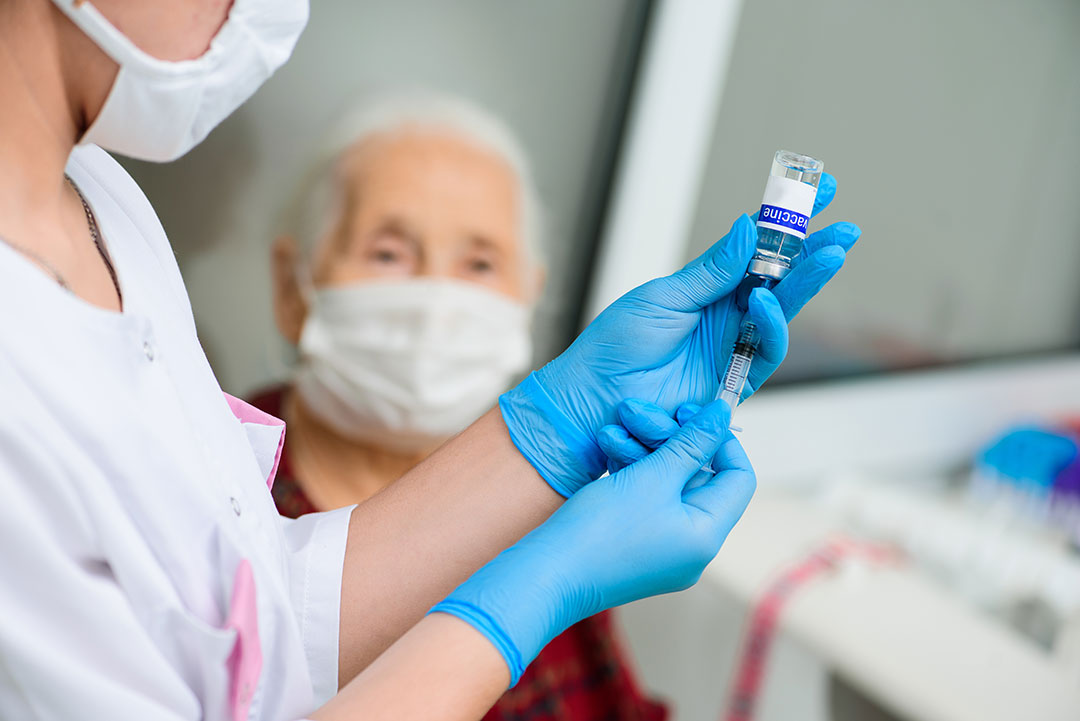How fractional dosing of COVID-19 vaccines could boost global supply
Halving the dose of some COVID-19 vaccines could provide an extra 0.5 billion doses each month, researchers suggest.
- 14 March 2022
- 4 min read
- by Linda Geddes

The longer people remain unvaccinated, the more time it will take for the COVID-19 pandemic to end. With global vaccine supply continuing to fall short of demand, experts are increasingly pondering whether using lower doses could provide a solution.
Even if this lower dose were slightly less effective, by vaccinating more people faster it could substantially reduce the total number of infections and deaths.
Such “fractional dosing” has previously been used to bring other epidemics under control. For instance, during a major outbreak of yellow fever in 2016-18, the Democratic Republic of the Congo, Angola and subsequently Brazil used 1/5 doses of yellow fever vaccine, based on WHO advice. Studies suggested that this lower dose triggered similar antibody responses to a full dose, and that people remained protected against the disease ten years later.
Fractional dosing of inactivated poliovirus vaccine has also been crucial to efforts to eradicate polio over the past decade. So, could it also work for COVID-19?
What are fractional doses?
As the name implies, fractional dose vaccination uses a fraction of the standard dose of a vaccine to trigger the same sorts of protective immune responses as a standard dose. Even if this lower dose were slightly less effective, by vaccinating more people faster it could substantially reduce the total number of infections and deaths.
Fractional doses have already been used in the context of the COVID-19 pandemic: For instance, some countries, such as the US and UK, have been using a half dose of the Moderna COVID-19 vaccine during their booster vaccination campaigns.
Are fractional doses still effective?
The efficacy of fractional doses of COVID-19 vaccines compared to full doses is still largely unknown.
Data suggests that lower doses still trigger strong immune responses. For instance, research published in Science suggested that giving people an initial 25-microgram dose (a quarter of the normal dose) of the Moderna vaccine produced an almost identical immune response to catching the virus and recovering from it. Six months after the second dose, almost all of the 35 people vaccinated still had detectable antibodies, T cells and helper cells, the research suggested.
Have you read?
Also, data from a phase 1/2 trial of the Pfizer/BioNTech vaccine suggested that giving people a 10-microgram dose (a third of the normal dose) triggered comparable immune responses to giving them a full dose – although it didn’t test how well they were protected against disease.
Further studies are planned. On 22 February, the Coalition for Epidemic Preparedness Innovations (CEPI) announced the launch of a clinical trial which will investigate the impact of using fractional doses of COVID-19 vaccines as booster shots.
Participants in Australia, Indonesia and Mongolia who have already received two doses of the Pfizer, Oxford/AstraZeneca, Sinovac or Sinopharm COVID-19 vaccines will either be offered a full or reduced dose of the Pfizer/BioNTech, Moderna or Oxford/AstraZeneca vaccine as a booster. As well as investigating efficacy, the trial should reveal whether fractional doses generate fewer side effects.
Impact on COVID-19 vaccine supply
Based on available clinical data and vaccine supply projections for 2021, health economists led by Brandon Joel Tan at Harvard University calculated that using half or quarter doses of some COVID-19 vaccines could expand supply by 450 million to 1.55 billion doses per month.
The research, published in Proceedings of the National Academy of Sciences, also suggested that switching to fractional doses could potentially save lives by accelerating vaccination in countries that are still facing supply constraints. “The risk of changing doses is [also] lower when the unvaccinated population is young or when a higher share of the population has already acquired immunity through infection, as is increasingly the case around the world,” the authors said.
They proposed that governments support further experimental or observational evaluations of fractional dosing for either primary or booster shots. If a major fall in efficacy was observed, people could always be re-vaccinated with a stronger dose, they said.









